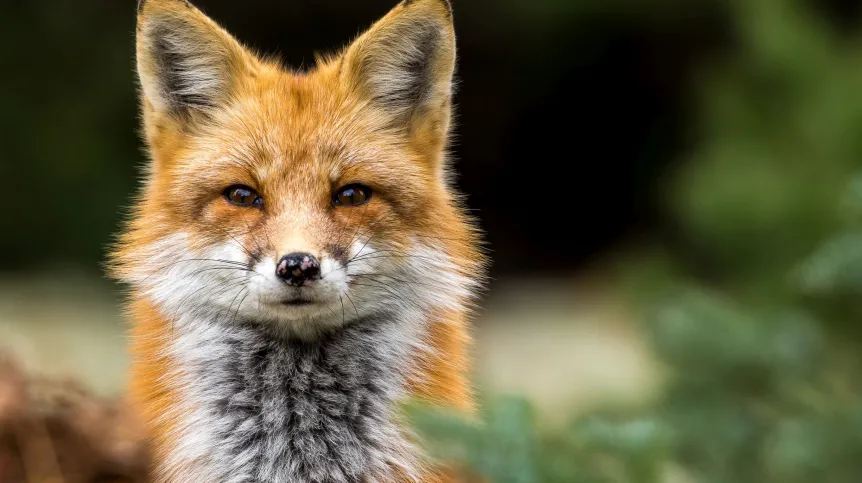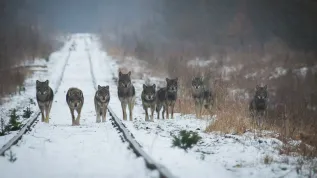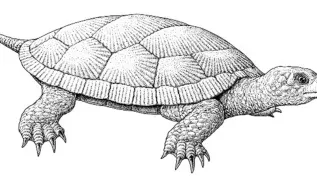
Over the centuries, humans have deprived animals of large areas of their natural habitats. However, some of them have adapted perfectly to the new conditions they find in urban agglomerations, says the head of Department of Vertebrate Ecology and Zoology of the University of Gdańsk, Professor Włodzimierz Meissner.
'The main reason animals enter cities is easy access to food of anthropogenic origin. People leave a lot of waste around them, which can be a source of food,’ says Professor Meissner.
‘In practice, they do not experience high pressure from humans. Animals are not hunted in cities, and the attitude of people towards animals is very positive,’ he adds.
In addition, he says that in winter the air temperature in cities is always a few degrees higher than in rural areas, which is of particular importance for reducing energy expenditure in this most difficult time of the year for animals. City dwellers have become accustomed to the sight of foxes and wild boars walking the streets. Moose also more boldly approach inhabited areas. Last week, a bear was seen on the streets of Sanok (Małopolska).
According to Meissner, over the centuries humans have deprived animals of large areas of their natural habitats. However, some animals have adapted perfectly to the new conditions they find in urban agglomerations. 'Swifts are a perfect example. For them, tall concrete buildings are equivalent to rocks, in the crevices of which they build their nests. As a result, the vast majority of pairs of this species moved to cities,’ he says.
He adds that in the last 20 years in Pomerania, the herring gull has also become a species that has almost completely moved to cities, where it nests on the roofs of buildings. 'These examples, and there are many more, show that some species move to cities, finding similar, and sometimes even better living conditions than in their natural habitats,’ he says.
In his opinion, the situation is different if we consider it in the context of urban buildings entering areas where animals used to live. 'In this case, most animals will retreat, and only opportunists that quickly adapt to changing conditions will remain,’ Meissner. says.
He emphasises that we will encounter wild animals in city streets more often. 'This can be seen in Western Europe, where in some cities, for example, foxes have become a numerous and permanent feature.
‘For animals that come to a city while wandering from their natural habitats, entering a built-up area will always be a great threat. It is different for animals that have been living in cities for a long time, creating urban populations of their species. They are much better adapted to living in built-up areas and can avoid contact with humans, but also take advantage of human presence’,' Meissner says.
He adds that animals in cities usually pose no threat to humans, provided that people behave unobtrusively towards them. 'There are, of course, well-known exceptions, such as a sow with piglets, or the intrusion of a large predator such as a bear into the city, which was recently reported by the media. But remember that this animal will be the first to avoid contact with humans and if you do not get too close to it, it will not attack,’ says Meissner.
According to the scientist, the process of animals entering cities will be difficult to stop. 'For many of them, cities offer attractive living conditions. Certainly, a good course of action would be to strongly limit access to organic waste,’ he says.
He explains that for this purpose in some cities, for example, garbage cans and waste bins are in closed spaces. 'However, this only partially solves the problem, because people leave a lot of waste outside the places intended for its storage,’ he says, adding that in Gdańsk, in one of the large housing estates, he observed foxes that used food for local cats left by neighbourhood animal lovers. 'There are more such examples, and they prove that we are unable to eliminate access to anthropogenic food sources in cities, and this is one of the main factors that attract animals to cities,’ he says.
According to Meissner, catching and transporting animals away from cities to remote areas would be a Sisyphean task as ‘others will take their place.’
In his opinion, people will have to get used to foxes, as they have in many cities in Western Europe. 'It is a little different with wild boars, which can pose a physical threat to humans, especially if we get too close to them. The only solution is to catch them and transport them over long distances, it will never be a one-off situation and other animals will appear in a short time in place of the removed ones,’ he says and adds that this will happen as long as wild boars and other animals do not fear humans. 'This would change if, for example, they were shot at, and as we know, firstly, it is impossible in cities, and secondly, it raises great moral concerns,’ Meissner says.
author: Piotr Mirowicz
pm/ apiech/ kap/
tr. RL













